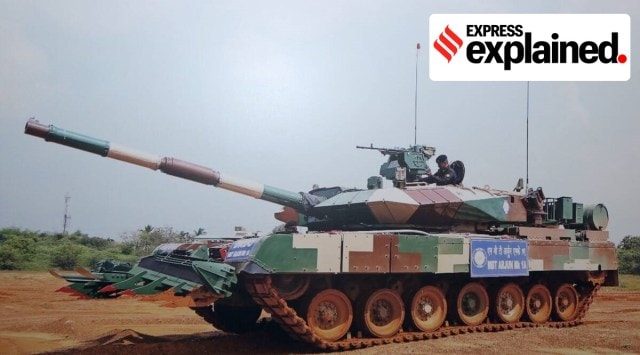The development of Arjun was started by the Defence Research and Development Organisation (DRDO) in the late 1980s, primarily to augment the predominantly Russian-made armoured fleet until then.

Trials of the earliest Arjun variant began in the early 1990s and the tank was inducted in 2004. Work on the variant Mark-1A, or Mk-1A, began in June 2010 and the tank was fielded for trials in June 2012. For the next three years, extensive trial evaluations were conducted by both the DRDO and the Army, followed by more trials, including field trials, in subsequent years.
The Mark-1A variant adds 72 new features — 14 major and 58 minor — to the previous variant Mark-1. These additions have resulted in better all-terrain mobility and manoeuvrability in different modes of operation, better target acquisition, and precision firing during both day and night with a 360° view, and a multi-layered robust protective armour named ‘Kanchan’. The additions, along with its robust 120 mm rifled gun, have contributed to its categorisation as the ‘hunter killer’. The DRDO is currently conducting trials of firing guided missiles from Arjun.
The Defence Ministry has said Mk-1A has more indigenous content than Mk-1, thus reducing dependence on foreign vendors. The new variant is also said to have added some comfort features for the four-member crew, who operate in tough conditions when deployed, and has a better transmission system. Some of the features also prepare the tank better for network-centric warfare — or effective use of information technology and computer networking in the battlefield.

What is the significance of the acquisition?
The acquisition of 118 tanks would equip three armoured regiments, as one regiment comprises 40 to 50 tanks. This acquisition holds significance in light of the Pakistan Army’s latest acquisition of two tanks, VT-4 and Al-Khalid. Both tanks, which are of Chinese origin, are comparable to the Russian origin T-90 tanks that are in use by the Indian Army.
Arjun Mark-1A is ideally suited for desert terrain, and even more effective and lethal compared to earlier variant due to the new additions. In exercises where Arjun squadrons were pitched against those of the T-90, Arjun is said to have matched the Russian opponent in some aspects and outperformed in some others.
Story continues below this ad
However, the weight of the tank puts a limitation on its deployability in high-altitude terrains. While the 72 new additions have significantly increased efficacy, they have also added somewhere between 5 and 6 tonnes to a system that was already on the heavier side.
The Defence Ministry said in a press statement: “By virtue of these capabilities, this indigenous MBT proves to be at par with any contemporary in its class across the globe. This tank is particularly configured and designed for Indian conditions and hence it is suitable for deployment to protect the frontiers in an effective manner.”
How big a stride is this for indigenous capability?
The new variant is said to have increased the proportion of the indigenous components. The Ministry has said the order will provide a further boost to the ‘Make in India’ initiative in the defence sector and is a big step towards ‘Aatmanirbhar Bharat’. “This production order to the Heavy Vehicles Factory opens up a large avenue in defence manufacturing for over 200 Indian vendors including MSMEs, with employment opportunities to around 8,000 people. This will be a flagship project showcasing the indigenous capability in cutting-edge defence technologies.”
Senior DRDO officials have said that from their perspective, Arjun Mark-1A was ready for induction into the Army by 2018-19. The development of the tank was led by the Chennai-based DRDO facility Combat Vehicles Research and Development Establishment (CVRDE) along with the other DRDO laboratories.
Story continues below this ad
In February, Prime Minister Narendra Modi had handed over the prototype Arjun Mk-1A to Chief of Army Staff General M M Naravane at a ceremony in Chennai. Officials from the Ordnance factories have said it will take at least two-and-a-half to three years till the first batch of the tank is delivered to the Army.
Newsletter | Click to get the day’s best explainers in your inbox









































